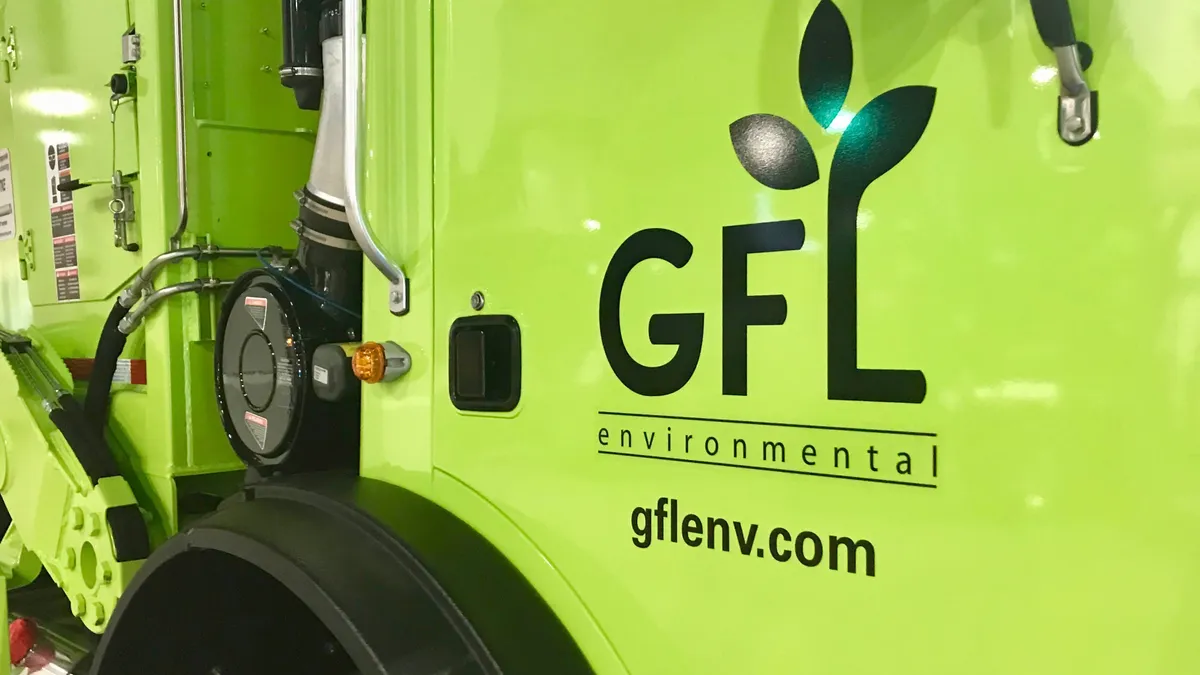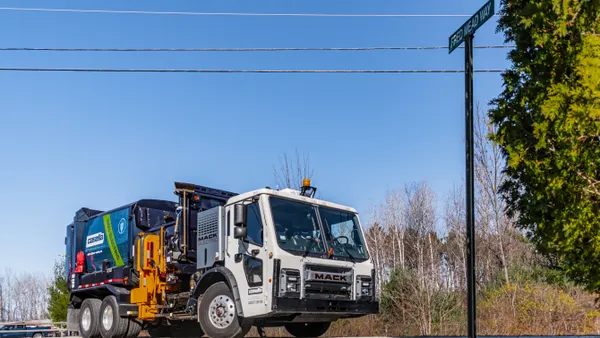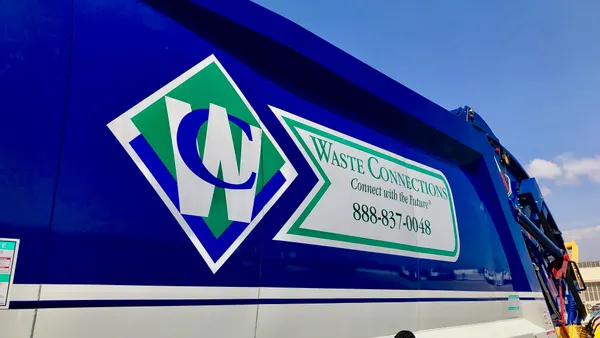All financial information in Canadian dollars
Q1 Earnings
| Revenue | $931.3M |
| Net Loss | $277.9M |
GFL Environmental's first quarter as a public company comes at an unexpectedly tumultuous time in the global economy, but the Canadian service provider reported multiple signs of resiliency and indicated its active expansion strategy will continue.
In a sign of growth, the company reported a 4.9% rise in solid waste pricing and a 29.2% increase in overall quarterly revenue year-over-year. It spent $1.13 billion on acquisitions during Q1 alone, much of that for Virginia-based County Waste and Michigan-based American Waste. The rest covered six small tuck-in deals. Following an initial public offering in March, and an April bond offering, executives said they were well-positioned to keep up the momentum.
“We plan to continue to capitalize on attractive opportunities that may arise," said CEO Patrick Dovigi during this morning's earnings call, "and like we have seen in the past, we expect that this crisis will generate opportunity."
COVID-19 effects
- While GFL didn't report material Q1 revenue effects from COVID-19, it did see volume declines beginning around mid-March. Excluding rollover benefits from prior acquisitions, GFL's April revenue was down by 9.9% overall and 8.7% for solid waste. Effects were particularly notable in Canada, which had mandatory stay-at-home policies, whereas solid waste revenue in the United States was only down by 4.2%.
- GFL's roll-off hauls declined week-over-week until beginning to stabilize around late April, at which point they were still off by 18%. Dovigi reported the commercial revenue stream was down by around 7% at its low point and has recovered to now be off by around 4-4.5%. "We are now having customers reengage as they are preparing to reopen, which is another sign we perceive that is indicating the worst is behind us," he said.
- The company saw residential volumes increase by 2.6% for Q1, with upticks as high as 15% reported for the broader COVID-19 shutdown period into April among major Canadian cities and parts of Michigan. The Canadian uptick was described as "neutral to a benefit" due to a tonnage-based contract structure. An estimated 40% of U.S. business is on a subscription basis, meaning price increases can occur more quickly. As for the rest, Dovigi said GFL "will work with the municipalities to try and get more money out of them."
GFL's rise to become the North American industry's fourth-largest player has accelerated in recent years, due in large part to major U.S. acquisitions, and its first-ever quarterly results reflect that. The company saw a nearly 32% increase in Q1 solid waste revenue year-over-year and U.S. revenue for that segment grew substantially to $434.9 million.
The company's positioning in more secondary U.S. markets appears to have helped insulate it from the heaviest shutdown effects. In contrast, GFL's presence in urban Canadian markets such as Toronto and Montreal played a sizable role in many of the negative trends. Industrial, commercial and institutional business in Canada has been down four times more than the company's continental portfolio.
While GFL did not offer any notable 2020 guidance, like its other publicly-traded competitors, executives pointed to a variety of signs that effects might not be as severe. About 6-7% of commercial customers have requested temporary service suspensions or changes in frequency, but there has been "very little" outright cancellation. The company's relatively smaller share of high-margin landfill revenue, which has taken a hit in the industry, was also raised as a possible near-term benefit.
Business updates
- GFL's infrastructure and soil remediation business saw 6% organic revenue growth during Q1, with Dovigi reporting about 85% of job sites are now operational again. Revenue for the liquid waste line, expected to be "most impacted," was down by 7.4% due to a variety of factors such as lower oil prices.
- Like its competitors, GFL reported plans to reduce discretionary costs. Planned 2020 capital expenditures of around $440 million have been reduced by about $100 million, due in part to easing off what CFO Luke Pelosi described as an "active replacement schedule" for equipment. Overtime costs are also down by 27%, while pay increases for salaried employees are on hold.
- The company reported raising a total of nearly $2.9 billion from its March IPO and concurrent tangible equity unit offering, much of which went to paying down debt. Combined with the April bond offering, Pelosi said GFL now has more than $1.3 billion of liquidity "with no material debt maturities in the near term."
Looking ahead
- GFL reported increased expenses for personal protective equipment and other COVID-19 hygiene measures, but executives said this may have been offset by savings on fuel and other expenses to date. Dovigi also confirmed its recent COVID-19 facility cleaning service has "become a new line of business" and was continuing to grow.
- Pelosi reported the company was a little more than halfway through repricing its existing solid waste business, with an anticipated $20 million in revenue left to go. Before the 2018 Waste Industries acquisition, Dovigi said "we didn’t spend five minutes focusing on price" as opposed to growing market share. After the deal, "we took that playbook and started rationalizing our entire book of business."
- M&A activity has been paused in recent weeks, with some tuck-in deals temporarily delayed, but Dovigi anticipated resuming work soon. He expected valuations may change for some smaller companies as sellers decide they don't want to weather another economic downturn. "We're seeing that on some of our pipeline today where we had a little bit of a price gap," said Dovigi. "The sellers are again becoming a little more realistic and I think that will lend itself to a good bunch of execution opportunities over the next six months."












